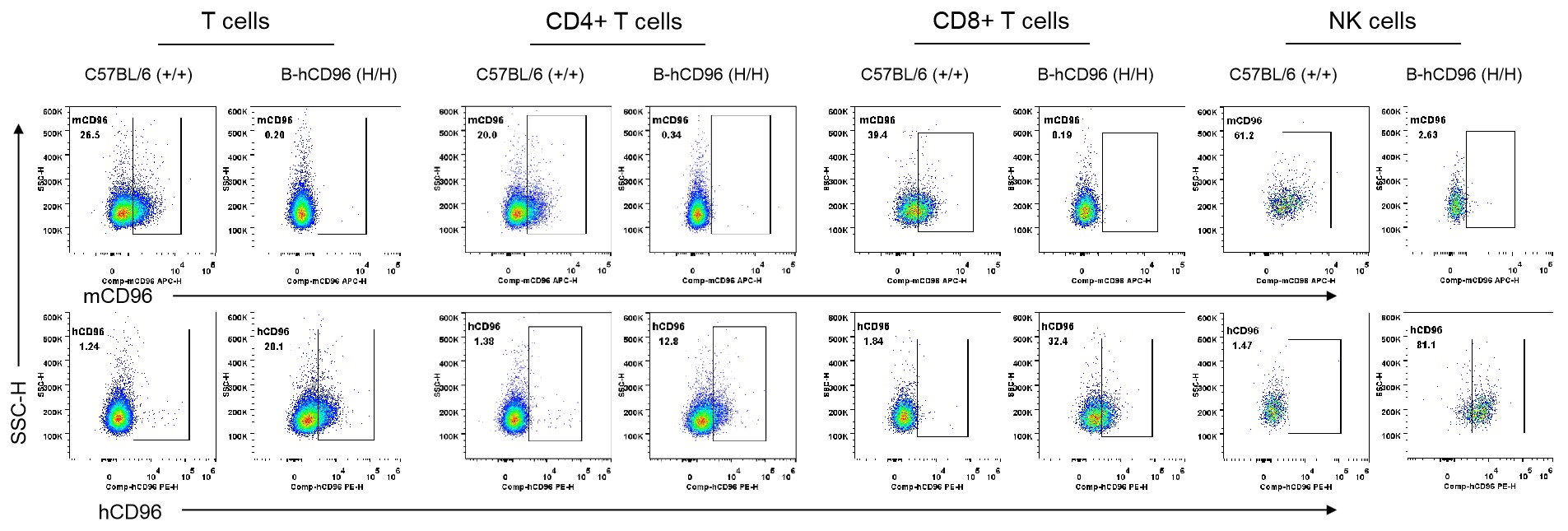


C57BL/6-Cd96tm2(CD96)Bcgen/Bcgen • 113588
| Product name | B-hCD96 mice |
|---|---|
| Catalog number | 113588 |
| Strain name | C57BL/6-Cd96tm2(CD96)Bcgen/Bcgen |
| Strain background | C57BL/6 |
| NCBI gene ID | 10225 |
| Aliases | TACTILE |
Gene targeting strategy for B-hCD96 mice. The exons 1-14 of mouse Cd96 gene that encode signal peptide and extracellular domain are replaced by human counterparts in B-hCD96 mice. The genomic region of mouse Cd96 gene that encodes transmembrane domain and cytoplasmic portion is retained. The promoter, 5’UTR and 3’UTR region of the mouse gene are retained. The chimeric CD96 expression is driven by endogenous mouse Cd96 promoter, while mouse Cd96 gene transcription and translation will be disrupted.

Strain specific CD96 expression analysis in wild-type C57BL/6 mice and homozygous humanized B-hCD96 mice by flow cytometry. Splenocytes were collected from wild-type C57BL/6 mice (+/+) and homozygous B-hCD96 mice (H/H). Protein expression was analyzed with anti-mouse CD96 antibody (Biolegend, 131711) and anti-human CD96 antibody (Biolegend, 338405) by flow cytometry. Mouse CD96 was only detectable on T cells,CD4+ T cells, CD8+ T cells and NK cells in wild-type C57BL/6 mice. Human CD96 was exclusively detectable on T cells,CD4+ T cells, CD8+ T cells and NK cells in homozygous B-hCD96 mice, but not in wild-type C57BL/6 mice.